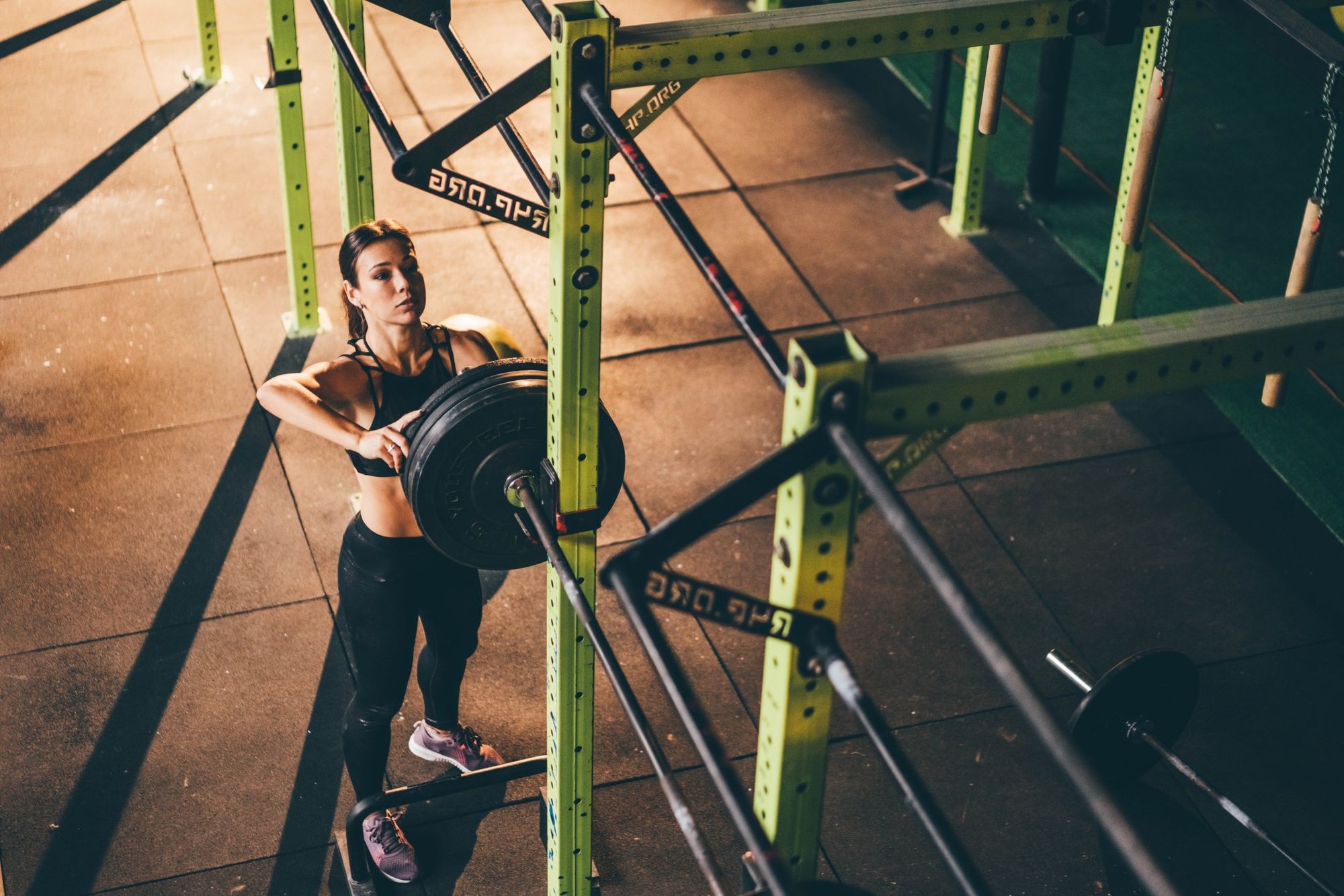Barbell vs. Dumbbell: Is There a Clear Winner?
Barbell vs. dumbbell - which should you choose? And, perhaps more importantly, does it even matter in the grand scheme of things? We explore.

If you’re a long-time reader of the GymStreak blog (?), you should have a good idea of where we stand on the "free weights vs. machines" debate when it comes to muscle growth.
For the uninitiated and currently feeling lost, well, our stance is that you should incorporate both into your training to best reap the unique benefits of each. (Feel free to check out our "Free Weights vs. Resistance Machine" article here)
But what about within the free weights category itself?
Note: for brevity’s sake, we’ll limit our definition of “free weights” in this article to simply the barbell and dumbbell. There are other options, like the kettlebells, of course, but they often aren’t as versatile (try doing a chest press with kettlebells!) – nor widely used – as either barbells or dumbbells.
Whew. With the all-important disclaimer out of the way, let’s get right down to answering this: "barbell vs. dumbbell: who takes the crown?"
But does it matter?
But, first up, it’s probably a good idea to explain why this article exists in the first place.
After all, you may have caught yourself thinking, “Um, but why should I care which is better?” Oh, we’ll tell you why. Imagine if you’re someone who hates doing barbell exercises. Maybe it’s always felt awkward for you. Or, perhaps, none of the mobility work you’ve done has helped improve your form.
If this article tells you dumbbells are better than barbells, then you’ll have “permission” to quit the latter! And vice versa.
The only question now is … re: barbell vs. dumbbell, will there be a clear winner between the two?
Let’s take things one step at a time – and explore the reasons why even fitness experts have been claiming to ditch the barbell in their training.
What’s wrong with barbell exercises?
As hinted at earlier in the previous section, there are numerous, glaring disadvantages to training with barbells:
- Heavy starting weight: Your standard straight barbell weighs 45 pounds (20 kg). That'll be an insurmountable weight for many beginners, particularly on upper body movements, like the overhead press and the bench press. Compare that to dumbbells, where you’d have the flexibility of starting from less intimidating, 2 kg or 3 kg dumbbells if you wished. Barbell vs. dumbbell: one point to the latter.
- Unnatural plane of motion: Once you’ve gained strength, the first disadvantage of training with barbells may no longer apply to you. But one thing doesn’t change. Lifting with barbells isn’t the most natural – or comfortable – thing to do. Sure, some level of discomfort is only expected. You’re working out, not taking a vacation. But barbells often force the body into moving in one strict plane of motion that isn’t ideal for everyone. Take the barbell bench press, for instance. Not everyone has the necessary shoulder mobility that allows for safe, proper form.
- Lower back stress: Barbell exercises like the Romanian deadlift, bent-over row, and barbell squats are great at targeting their respective target muscle groups (i.e., hamstrings, back, and the lower body musculature, in general). But they also – unfortunately – place tremendous amounts of stress on the lower back. So, you run the risk of prematurely ending a working set owing to a fatigued (or maybe even painful) lower back instead of a target muscle group. And that’s no good for muscle growth. The solution? You guessed it: dumbbells. They allow you to tweak the loading angle (to the side on Romanian deadlifts), so a particular exercise becomes kinder on the lower back.
Is it all bad?
Does that settle the "barbell vs. dumbbell" debate? Everyone should forget about barbells – and use dumbbells exclusively from now on, right?
Not so fast. There are still a few reasons why you may wish to choose barbells over dumbbells:
- Progressive overload: You’re an experienced lifter. At this point, you’re using 77 lbs. dumbbells in the gym for your seated shoulder press. And you’re already struggling to get it up from your knees. Well, this is where you should consider moving to barbell work. Barbells are much easier to load – allowing you to progressive overload without worrying about whether your kick-up would be enough to get those dumbbells to chest height.
- Sport-specificity: You're a powerlifter. You're a weightlifter. If you compete in a sport that necessitates training with a barbell, then, well, there’s no two ways about it: you can’t ditch the barbell. Research consistently highlights the existence of “training-specific adaptations”; in other words, you get better at the exercise you do. An easier way to think about it is that you can’t expect to barbell squat 170 lbs when all you’ve been doing are leg presses of the same weight (your legs are strong, yes, but there’s also a ton of neglected, smaller, stabilizing muscle groups that need to come into play).
- Personal reasons: Love barbell exercises? Enjoy your workout sessions a lot more because you feel like you’re truly pushing yourself? Then, hey, who said you had to give up barbells? Ultimately, your muscles won’t discriminate load – weight is weight; if you’re training with adequate volume and intensity, they’ll grow. No matter if you’re using barbells or dumbbells. Just be consistent.
Barbell vs. dumbbell: you decide
To answer the question posed in the title (i.e., "barbell vs. dumbbell: is there a clear winner?"), we’d say it depends. On what, exactly?
Well, it depends on you.
Do you have – or like – to train with barbells? Then do it. But if you don't, go for dumbbells. Just know that you may have to switch to barbells for progressive overload reasons eventually.
That said, even then, you could always opt for other forms of free weight, like cables (but, once again, that’s beyond the scope of this article).
Takeaway
How you train should be individualized – to your unique likes, dislikes, and fitness goals. There’s no one-size-fits-all training plan.
That’s why we’ve designed GymStreak, an AI-powered personal trainer app, to always account for your lifting experience, physique goals, and ideal training frequency. Better yet, you can even exclude specific exercises from your personalized training program based on the equipment they require (e.g., want only dumbbell exercises or bodyweight exercises? Done.)
It’s everything you need to get started on – or make further progress – on your fitness journey. Download GymStreak here.
References
Krieger, J. W. (2010). Single vs. multiple sets of resistance exercise for muscle hypertrophy: A meta-analysis. Journal of Strength and Conditioning Research, 24(4), 1150–1159. https://doi.org/10.1519/JSC.0b013e3181d4d436
Secomb, J. L., Farley, O. R., Nimphius, S., Lundgren, L., Tran, T. T., & Sheppard, J. M. (2017). The training-specific adaptations resulting from resistance training, gymnastics and plyometric training, and non-training in adolescent athletes. International Journal of Sports Science & Coaching, 12(6), 762–773. https://doi.org/10.1177/1747954117727810

